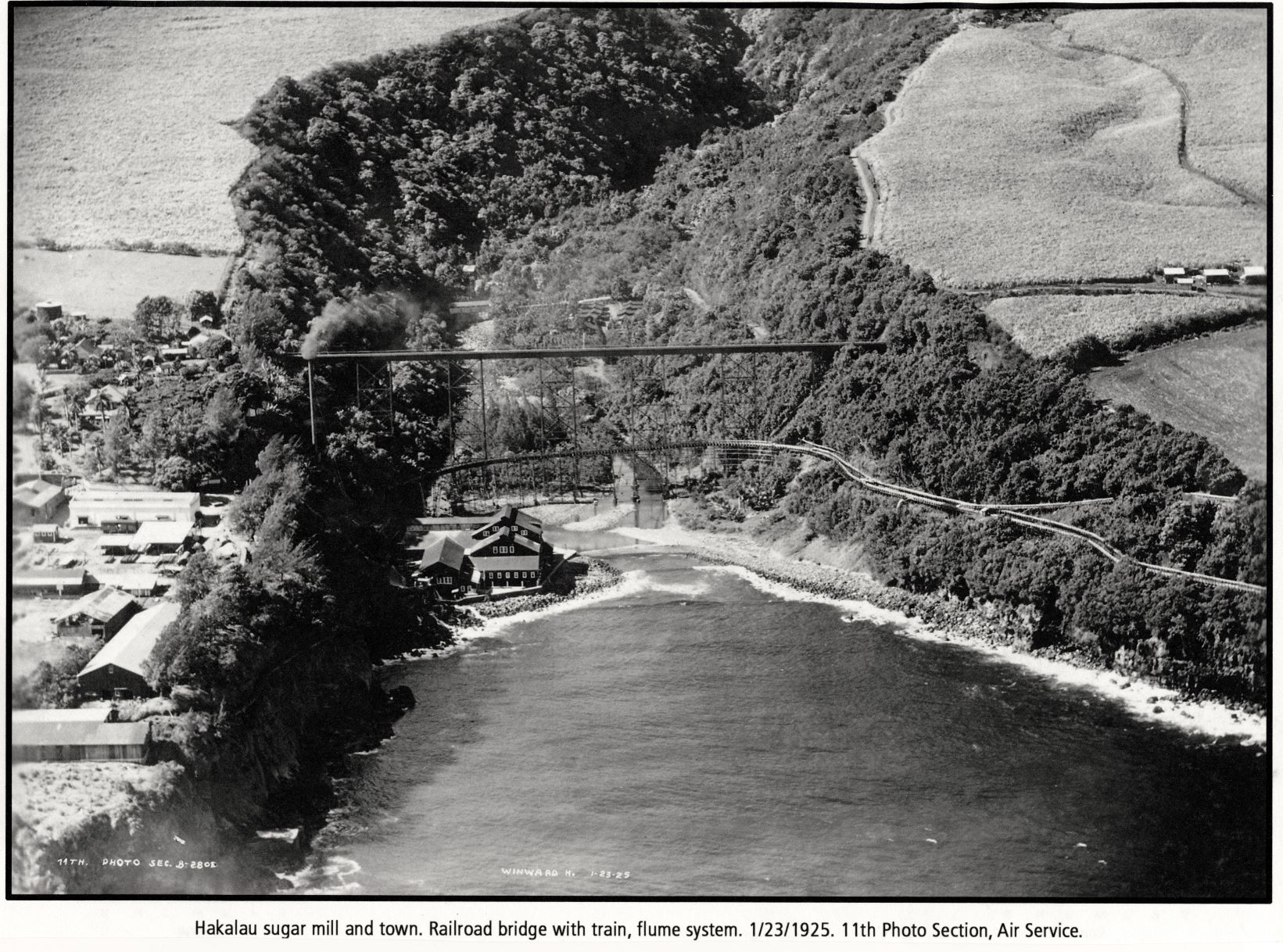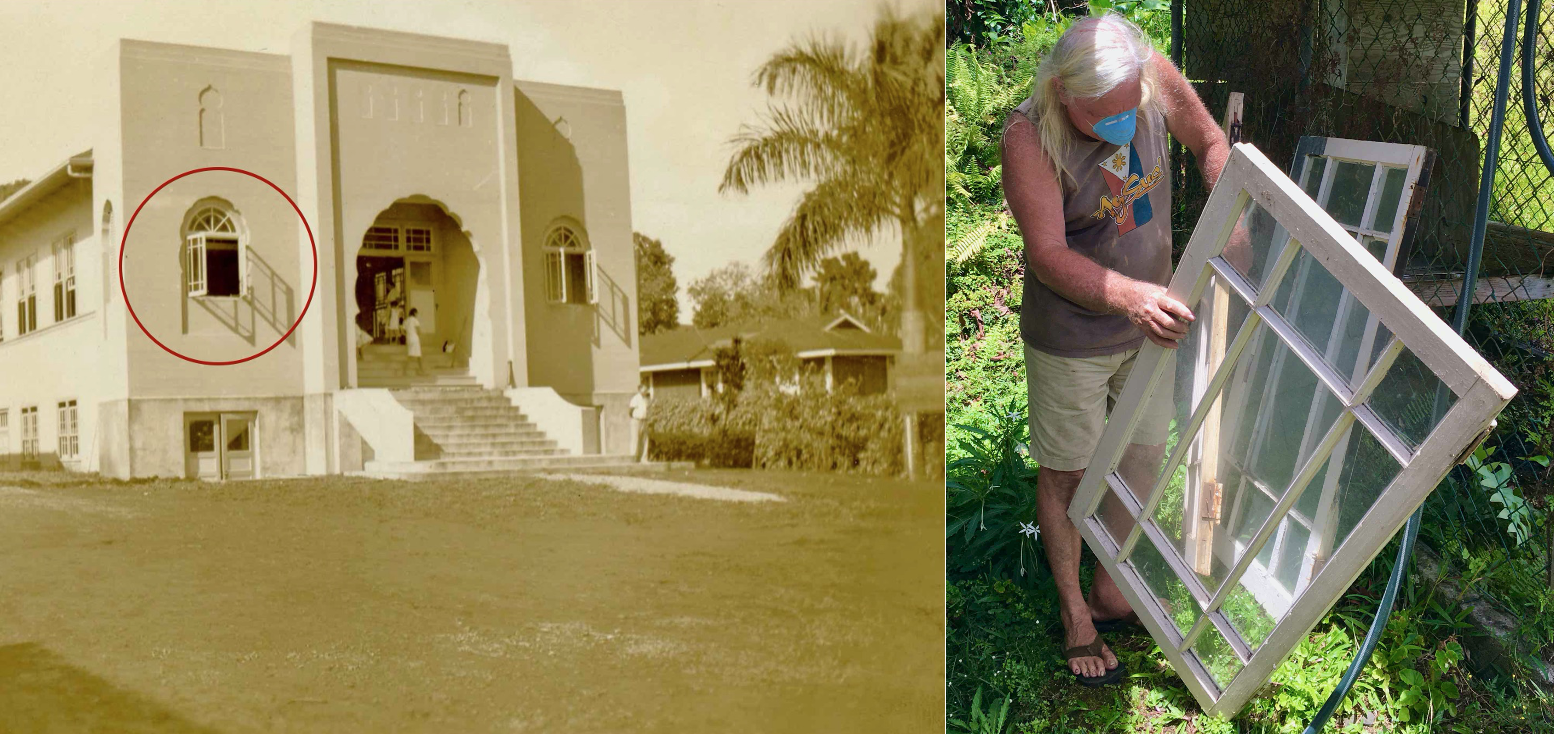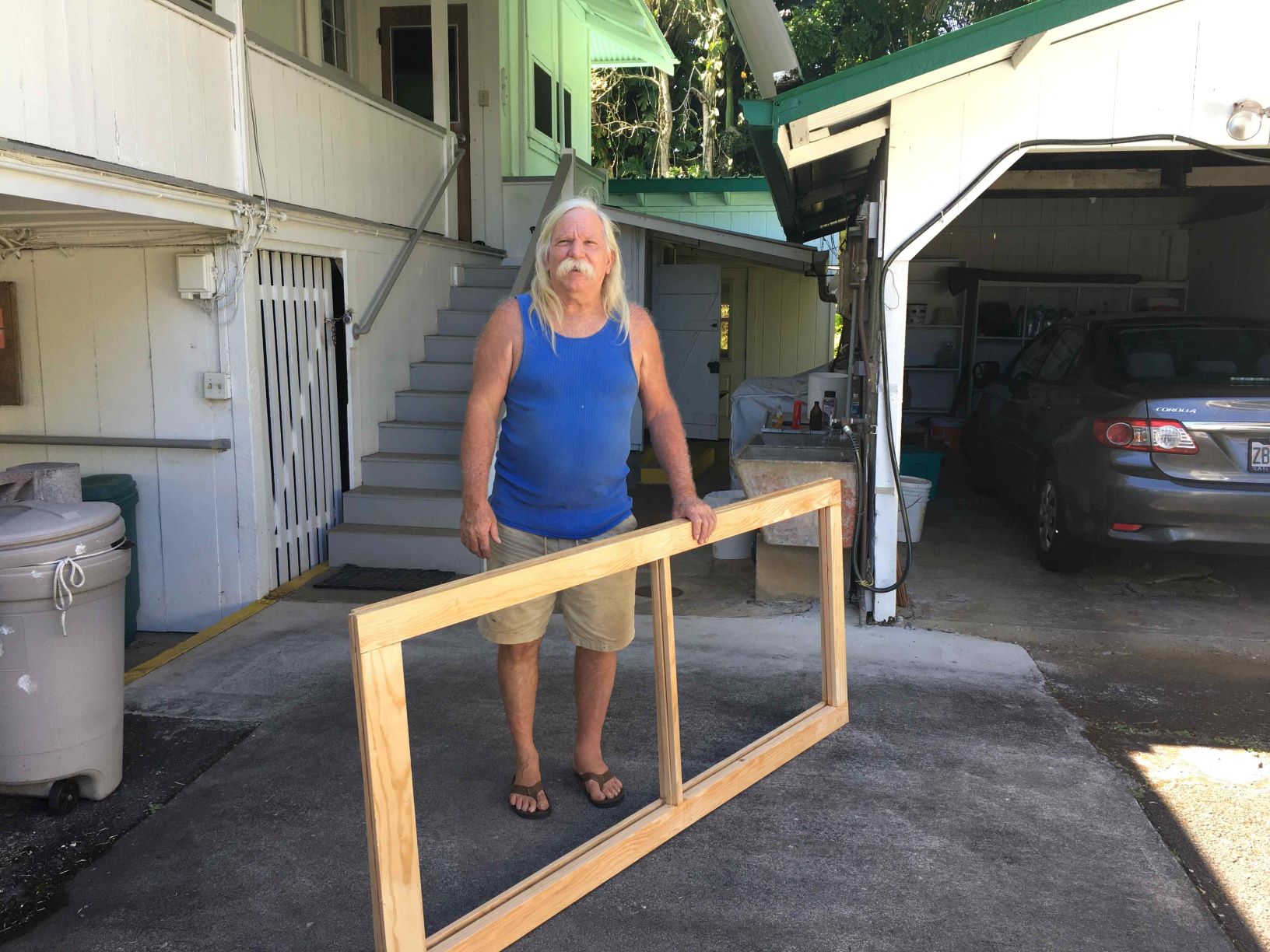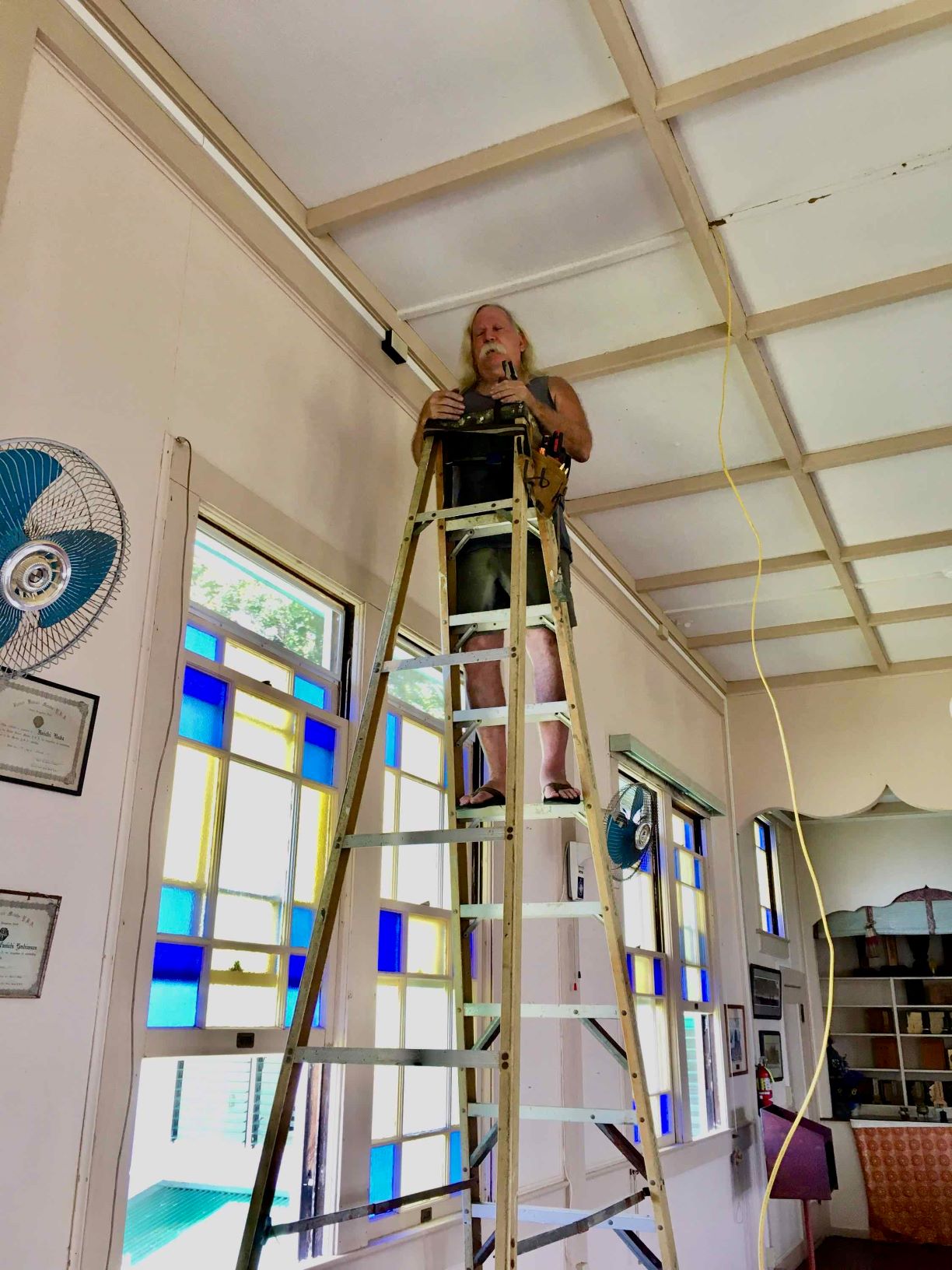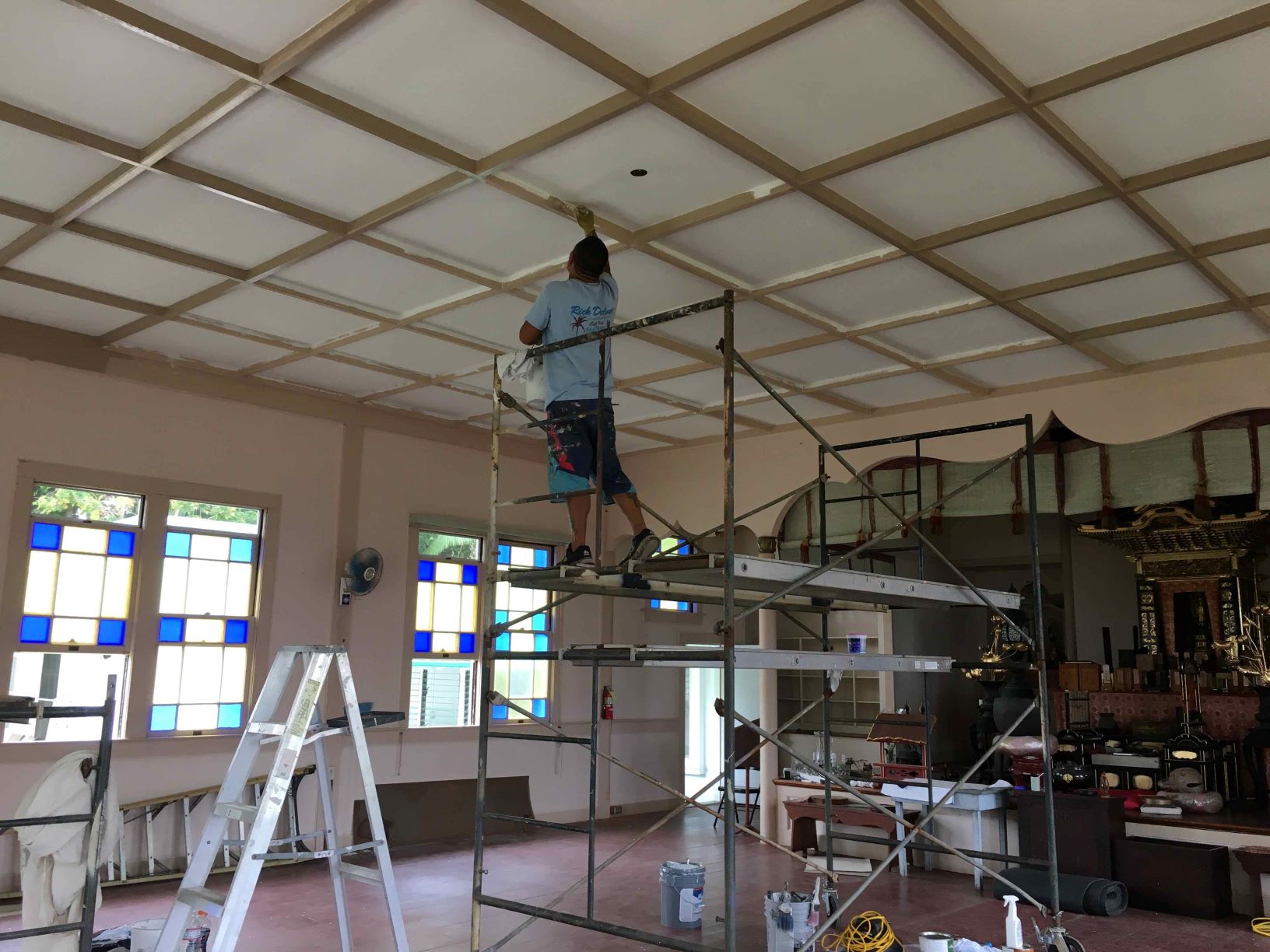KEEPING HAKALAU’S HISTORY AND VALUES ALIVE*
From the 1880s, Hakalau Sugar Plantation steadily supported a growing community. Immigrants—first from China, Portugal and Japan; then from Korea, Spain and other parts of Europe—fulfilled the need for laborers, some settling in independent homesteads. By the early 1940s Hakalau had a new hospital, school gym, theater, and bridge over Hakalau Stream; its businesses were thriving. The Fair Labor Standards Act of 1938 contributed to a more urgent need for both labor and housing. Economic uncertainty and World War II only made the situation more acute; the use of machinery for harvesting became more prevalent. In 1943, the Wailea Mill merged with Hakalau Sugar Plantation, bringing production to its all-time highest.
This all changed, however, after the devastating tsunami of 1946. The Hakalau Mill and some railroad bridges were destroyed, causing production to shut down for a year; the first industry-wide labor strike created further disruption. Resulting financial losses and heavy debt compounded by labor strife made it impossible for Hakalau Plantation to recover. The process of abandoning outlying villages and selling houses to workers on a removal basis began.
By the 1960s the sugar industry began consolidating–Hakalau Plantation was merged with Pepe‘ekeo Sugar Company, which later became a part of Mauna Kea Sugar Company. The business was diversified into macadamia nut and bio-mass tree farming. Around 2000, parent company C. Brewer started to subdivide its agricultural lands, offering them for sale in ten-acre lots. Except for the manager’s house and a few other structures, the homes and plantation buildings below the highway were demolished for the development of new oceanside estates and subdivisions.
Despite these dramatic changes, the spirit of the Hakalau community has remained strong through present day, due in part to the Wailea Village Historic Preservation Community (WVHPC) and continued efforts by the Hakalau ‘Ohana which includes past and current residents.

Dedication of the new Hakalau Jodo Mission, December 6, 1936. Photo from the Waichi Ouye Collection, courtesy of his family.
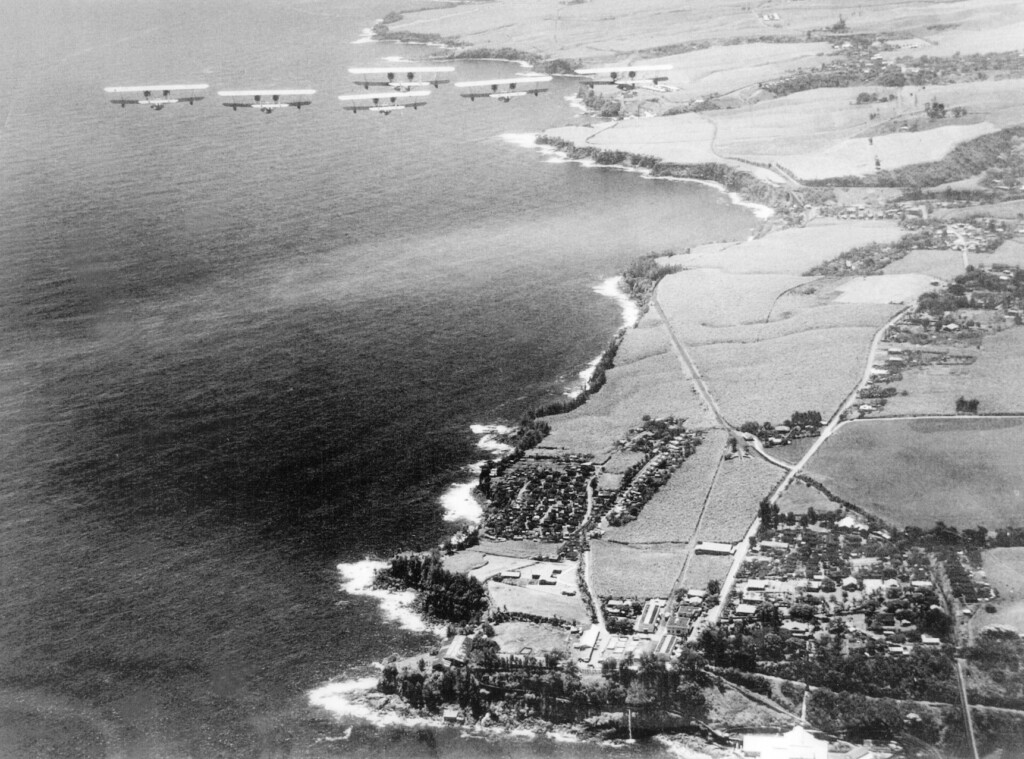
Hakalau circa 1932

Aerial view of Hakalau, 2019
WEAVING THE THREAD
Since moving to Hakalau several years ago, Susan and Ken Forbes have become actively involved with the preservation of the plantation town’s history. Ken’s family lived in Wailea Village in the 1950s while his father was a harvesting superintendent at the Hakalau Plantation. You may recall reading about Susan in 2019 when she led an effort to receive a preservation grant through Historic Hawai‘i Foundation for the Hakalau Jodo Mission.
Ken and Susan’s involvement started in 2013, when Akiko Masuda, then-president of WVHPC, prompted the Forbes to host a Hakalau Community Reunion gathering at their home, allowing former residents a visit to a newer home in the area. Finding kinship with this group, the Forbes decided to create a website, Hakalau Our Home (hakalauhome.com), that shares the history of Hakalau culled from books, newspapers, and archives. The website is intended as a “personal endeavor to dig deep into the history of a small slice of the Big Island, and to distill from that history, cultural values to share with the area’s current residents and others.”
Through years of persistence, Hakalau Our Home has become an invaluable community resource. The Forbes continually update the website with additional research and community news, keeping it relevant and interactive. Former residents and their descendants contribute personal stories and recollections. Photos and recaps of annual Hakalau Reunions are also shared. Anyone with an anecdote or old photographs about life in Hakalau or with news to share are encouraged to contact the Forbes.
RESTORING COMMUNITY
In addition, the Forbes are spearheading a restoration effort at Hakalau Jodo Mission with Susan leading the charge. While the COVID-19 pandemic has disrupted most of the gatherings and services at the temple, Susan has used the time to organize and initiate exciting new avenues of engagement.
Tackling a restoration for the first time, Susan readily admits that to date, the project has been far from smooth sailing. That said, she has swiftly steered the project back on course by forming a facilities committee of Mission members and recruiting a project manager. Candidly Susan shares some of the lessons she has learned, along with some of the counter-steps she and others have taken to engage with their community during the lockdown, in hopes that others may benefit.
1) Preserving a building or site in a smaller community often means a limited number of volunteers and resources. Don’t underestimate the experience and know-how needed for a restoration project. After almost a year of trying to complete a survey of the site and architectural drawings while navigating through the permitting process ourselves, we are better off hiring a real estate attorney to provide oversight.
2) Do rely on your community for consensual decision-making and sharing of responsibilities. Like a sports team, your committee members can each be responsible for their position and contribute their talent and time.
3) Facilitate communication and connection through a regular newsletter. The pandemic brought an abrupt halt to religious services and social activities at the Mission. In response, we opted to communicate more frequently through a monthly newsletter which provides more historic content and updates about the preservation project. The Mission president, Jan Nakamura, contributes reflections on Buddhist parables. Reverend Miyazaki delivers a written sermon and writes about cultural traditions or past events. The congregation has responded with thank you notes and donations.
4) Foster cultural preservation – younger generations are interested in their family history and the cultural values associated with the Mission. Young families are looking for ways to reinforce family-centered values with their children and the karate class helps fulfill this. Classes for adults include tai chi, bon dance and yoga, all involving history, culture and exercise.
The Forbes have also helped create a website for Hakalau Jodo Mission to share its history in rich depth, organized into four sections: The Early Years, 1904-1921; The Years between World Wars, 1921-1937; The Mamiya Years, 1937-1975; and The Later Years, from 1975-present. The website is an impressive archive of historical events, images, and news stories that captures the community role the Mission has held for decades.
Like many churches, temples and missions nationwide, Hakalau Jodo Mission has faced a sharp decline in membership as a consequence of the demise of the sugar industry. In Hakalau, the camps were demolished or homes were sold on a removal basis from the 1950s to 1970s and Mission members moved elsewhere. For some of these organizations, sadly the future is very uncertain. With some creativity and adaptation, however, they can continue to serve as active gathering hubs for communities. By identifying the Mission’s legacy, reinvigorating the Mission as a community center as well as a Buddhist Temple, Susan and Ken Forbes and the dedicated members of Hakalau Jodo Mission have formed the thread between the past and present.
From the Hakalau Our Home website:
“The values from the plantation community that former residents shared are gifts to us:
Engage in collective effort.
Look out for each other.
Honor hard work.
Show respect for those who came before us.As we’ve learned more about Hawaiian and Sugar Era history of this area, we realized there is another important value critical to us today:
Aloha and Mālama `Aina:
Aloha ‘aina simply means to love and respect the land, make it yours and claim stewardship for it.
Mālama ‘aina means to care for and nurture the land so it can give back all we need to sustain life for ourselves and our future generations.Creating hakalauhome.com is our way of showing our respect for those that came before us, building upon their history and values and sharing them broadly, and showcasing the collective effort of residents of Hakalau today.”
– Ken and Susan Forbes
Photos of current restoration work underway at Hakalau Jodo Mission
- The temple’s original windows were found in a storage shed
- Master Carpenter Roger Byrnes with repaired screen windows
- Repairing the temple ceiling
- Repainting of the ceiling
By Beth Iwata, Director of Development, Historic Hawai‘i Foundation
Further reading:
- June 2021 and July 2021 newsletters of Hakalau Jodo Mission (downloadable pdf)
- Hakalau Jodo Mission – State Register of Historic Places nomination
*Adapted from Hakalau Our Home https://www.hakalauhome.com


